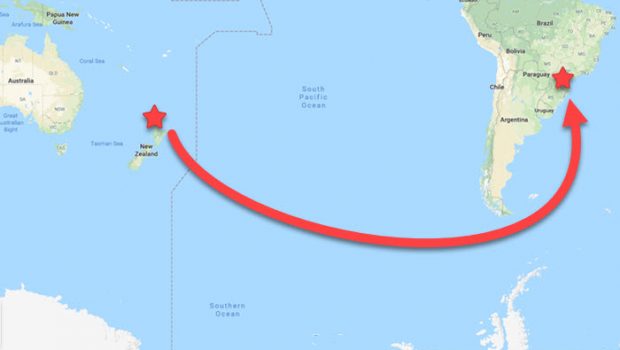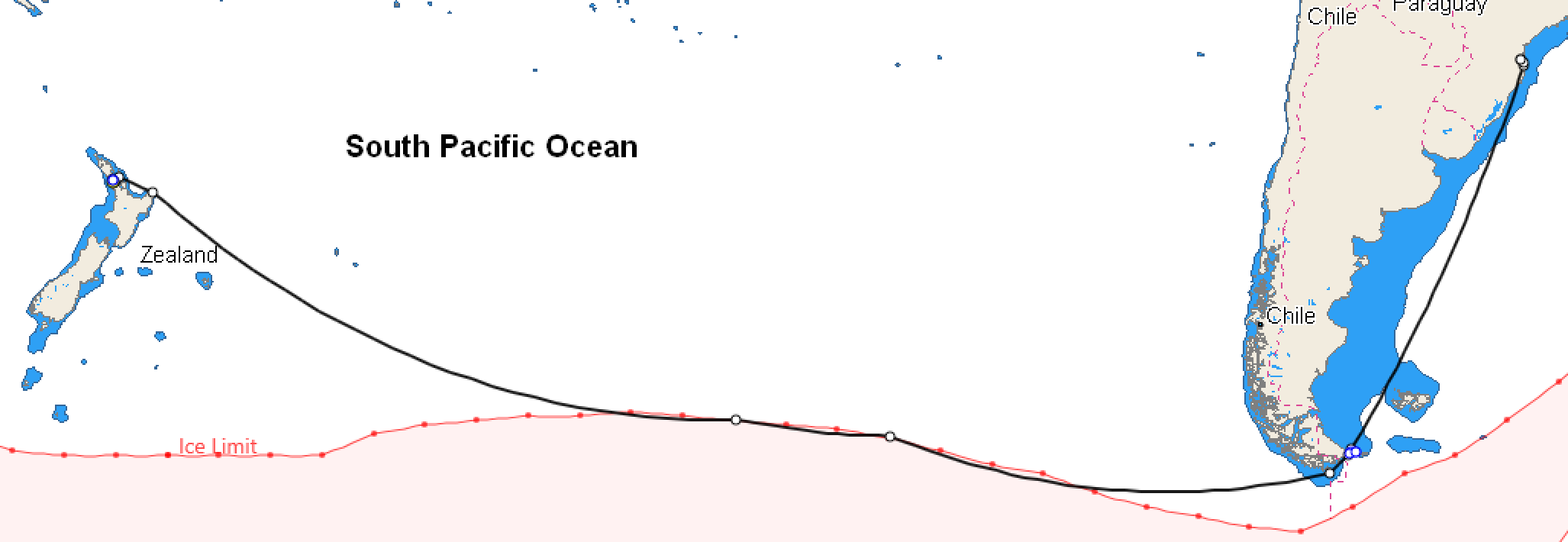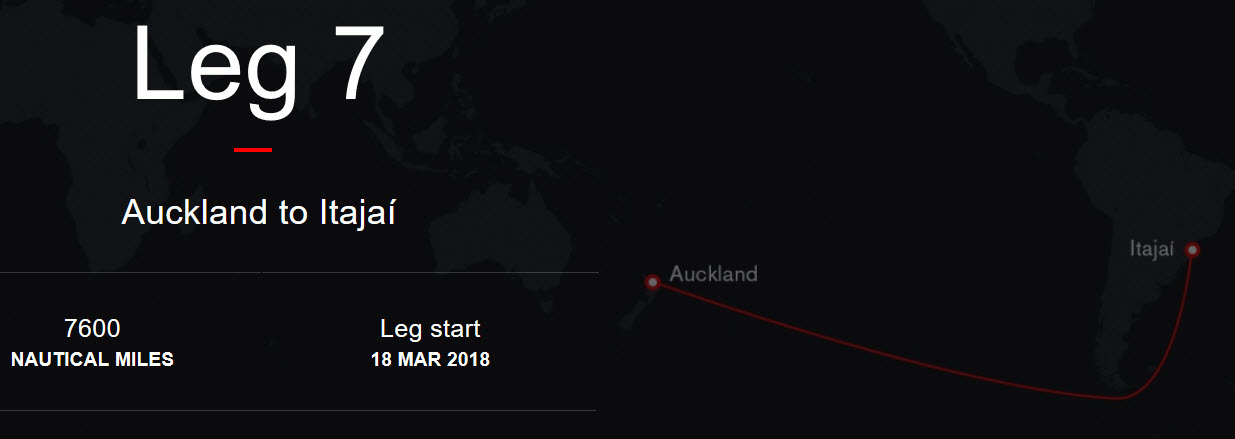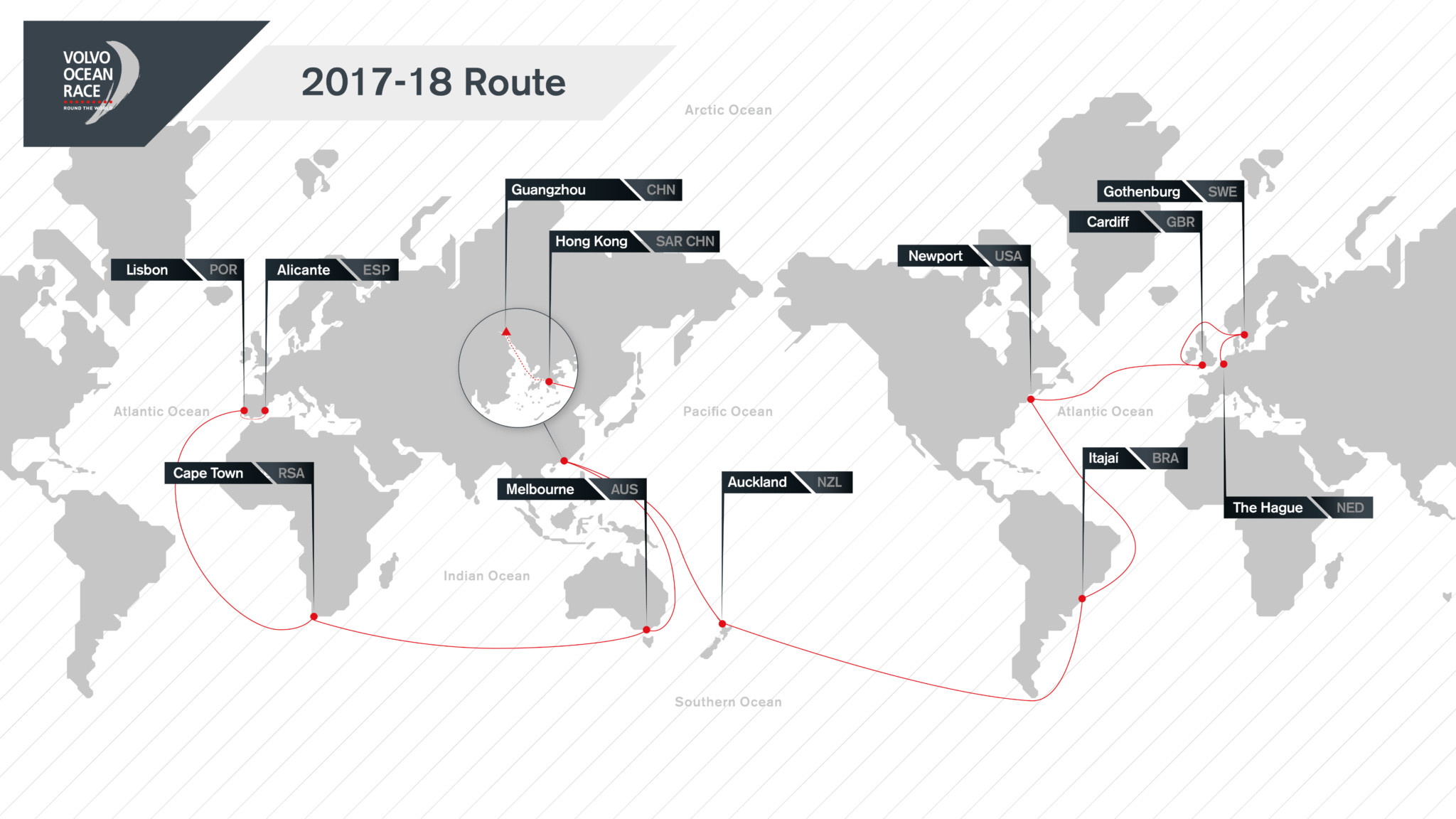Longest leg of Volvo Ocean Race
Published on March 15th, 2018
Anderson Reggio is providing shoreside navigation support for Team Vestas 11th Hour Racing in the 2017-18 Volvo Ocean Race. When the fleet starts Leg 7 on March 18, Reggio details here what lies ahead for the fleet.
The next leg from Auckland, New Zealand to Itajai, Brazil will take the teams on a 6,600 nm course exiting out of the Hauraki Gulf, down into the “Furious Fifties” against the ice gates, around the iconic Cape Horn, and up the eastern coast of South America before finishing just outside the host Brazilian city.
The ice gate for this edition is a bit further south compared to last, so this leg brings the Volvo Ocean Race back to true classic Southern Ocean style. The teams will want to get as far south as possible as fast they can to hop on the train of low-pressure systems in order to sail the least amount of distance to Cape Horn.
However, prior to getting to that fun and excitement, there will first be an inshore portion up and down the city front in Auckland before the boats exit out through the channel and sail the 30 nm across the Hauraki Gulf to Cape Colville.
Then from there, it is about 170 miles across the Bay of Plenty to reach the easternmost point of New Zealand called East Cape. Right now things are shaping up for a breezy upwind start so playing the shifts around the islands and headlands will be key to clearing New Zealand in the lead.
Once they get past East Cape, there are no real obstructions besides the Chatham Islands until the ice gates and everyone will be motivated to get as far south as they dare.
The strong easterlies from the start will be rotating into the Bay of Plenty around the northern side of a massive high pressure so teams will be pouring over how best to get around that high and into the low train. Go south to get east along the exclusion zone line.
If we remember back to Leg 3 (South Africa to Australia), we can recall how frustrating it was for some of the teams to be forced to gybe so many times along the invisible barrier so as to stay in the best pressure.
While the limit is there to provide for safe passage, it also can sometimes limit strategic opportunities. Plus, the physical toll of multiple gybes on a short-handed crew in extreme conditions makes for an added challenge. Most agree though that we’d take that over dodging bergs any day.
As teams make their way further east, the ice gate will slowly slide away to the south and the game becomes all about lining up the approach to Cape Horn. Always tricky, this area has poor sampling for weather model initialization and, as such, the weather models as you approach South America can become increasingly inaccurate.
Simultaneously, a lack of significant observational data in this part of the world and the extreme topographical variety in this region adds a lot of complexity to weather modeling. Luckily for us on Vestas, our sponsor has access to exceptionally good information and we’re confident that their support will give us an edge when things get meteorologically unpredictable around the Horn and up the east coast of South America.
The Strait of Lemaire, the gap between Tierra del Fuego and the Isla de Los Estados, will be the first navigational hazard they will encounter after rounding Cape Horn. A notoriously challenging cut, sixteen miles at its narrowest, it can deliver boat-breaking conditions in certain setups. Avoiding this pass would add quite a bit of extra miles, but if you get the timing wrong and try to sneak through, things could get messy quite quick.
It’s an incredibly dynamic setup with multiple options to get the boats from Cape Horn to Itajai. There are fast-moving weather systems that get pushed down around the bottom of the continent with some highs and lows that form of the eastern side. There is also a semi-permanent cold front that sits off of the land to the north which can spawn low-pressure systems pretty rapidly.
In the last race, there were a number of weather systems they had to encounter on part of the leg where what actually ended up happening was often quite different than what was predicted. That is the beauty of this leg; it is exactly the same as the last edition in precisely the same time of year.
Everyone has gone back to their notes in a hope to apply the lessons learned in anticipation of this leg again. The problem is, as it can be so unpredictable, those lessons may have zero value. Opposing currents, variable local breezes, rapid changes in the weather; trends could well lead to a false sense of confidence. Keep your wits about you and be willing to change the plan.
The finish line is right at the mouth of the river in Itajai. If it has been raining at all in the mountains, the runoff can cause quite a lot of debris to gather in the last final miles. Also, in the shadow of the mountains, we could see once again the rubber band effect of a park up outside the city where there are opportunities to gain if the weather cooperates for those behind. For both of the last two editions, there has been significant compression in the fleet coming into the end.
All in all, this is the leg that defines not just the Volvo Ocean Race but ocean racing in general. It is not only the longest for this edition but will push the sailors and the boats to the brink.
With double points on the line and an extra point for whoever rounds Cape Horn first, expect the teams not to hold back as we cross the 50 percent mark of points to be awarded in this around-the-world endeavor.
Distance: The race organizers choose to estimate the tactical distance for each leg rather than list the actual distance, an unusual decision that’s revealed once the race starts and the tracker lists the actual distance to finish. The VOR says Leg 7 is 7600 nm whereas the truth is more like 6600 nm.
Race details – Tracker – Scoreboard – Race route – Facebook – YouTube
Overall Results (after 6 of 11 legs)
1. MAPFRE (ESP), Xabi Fernández (ESP), 39 points
2. Dongfeng Race Team (CHN), Charles Caudrelier (FRA), 34
3. Team Sun Hung Kai/Scallywag (HKG), David Witt (AUS), 26
4. Team AkzoNobel (NED), Simeon Tienpont (NED), 23
5. Vestas 11th Hour Racing (DEN/USA), Charlie Enright (USA), 23
6. Team Brunel (NED), Bouwe Bekking (NED), 20
7. Turn the Tide on Plastic (POR), Dee Caffari (GBR), 12
2017-18 Edition: Entered Teams – Skippers
• Team AkzoNobel (NED), Simeon Tienpont (NED)
• Dongfeng Race Team (CHN), Charles Caudrelier (FRA)
• MAPFRE (ESP), Xabi Fernández (ESP)
• Vestas 11th Hour Racing (DEN/USA), Charlie Enright (USA)
• Team Sun Hung Kai/Scallywag (HKG), David Witt (AUS)
• Turn the Tide on Plastic (POR), Dee Caffari (GBR)
• Team Brunel (NED), Bouwe Bekking (NED)
Background: Racing the one design Volvo Ocean 65, the 2017-18 Volvo Ocean Race begins in Alicante, Spain on October 22 2017 with the final finish in The Hague, Netherlands on June 30 2018. In total, the 11-leg race will visit 12 cities in six continents: Alicante, Lisbon, Cape Town, Melbourne, Hong Kong, Guangzhou, Auckland, Itajaí, Newport, Cardiff, Gothenburg, and The Hague. A maximum of eight teams will compete.














 We’ll keep your information safe.
We’ll keep your information safe.